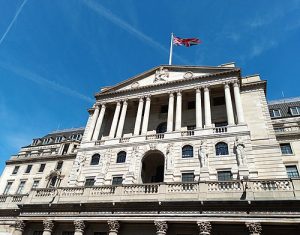
In the very heart of London’s financial district, beneath the imposing edifice of the Bank of England, lies a secret unbeknownst to most daily commuters and even to many of the city’s long-term residents—a concealed graveyard. But this is no ordinary burial ground; it is the churchyard of St Christopher le Stocks, a place steeped in history and serenity, enveloped by the unrelenting march of progress and urban development.
Historical Context

St Christopher le Stocks was a parish church that stood on Threadneedle Street, dating back to the 16th century or possibly even earlier. Over the years, it bore witness to countless historical events and changes in the surrounding area. By the late 18th century, as the Bank of England sought to expand its footprint, a critical decision was made. Rather than completely obliterating the sacred ground, the Bank chose to envelop it within its expanding complex.
The Expansion in 1781
In 1781, the Bank of England underwent a significant expansion, and in doing so, it subsumed the churchyard. The church itself was demolished, but rather than desecrating the hallowed ground where Londoners had been laid to rest for centuries, the Bank opted for a more respectful integration.
Integration into the Bank’s Garden
Remarkably, this area was carefully and respectfully turned into the Bank’s private garden. The grave markers may have been removed, but the souls resting there were left in peace. This garden serves as a green oasis amidst the financial hustle and bustle, almost as if the departed provide a silent, eternal counsel to the world of the living that has grown up around them.
Current Status
Today, few who walk through or past the Bank of England are aware of the layers of history under their feet. The garden is not generally accessible to the public, maintaining its secluded character. It remains a poignant reminder of how even in a city as ever-changing as London, there are pockets where time stands still, and the past coexists with the present.
Spiritual and Cultural Implications
While Bank Station has its share of spectral tales, such as the haunting by the Black Nun, one can only speculate if the spirits of St Christopher le Stocks’ churchyard have ever ventured out to the labyrinthine tunnels below. Regardless, the very existence of this hidden graveyard adds another layer of spiritual and historical texture to the locality.
So the next time you find yourself at Bank Station or passing by the Bank of England, you might spare a thought for this quiet sanctuary that lies hidden but not entirely forgotten. This graveyard is a poignant reminder of how London’s history is interwoven into its present, a complex tapestry that enriches our understanding of this endlessly fascinating city.
Listen to our London History Podcast Episode 122: Haunted Underground Stations





